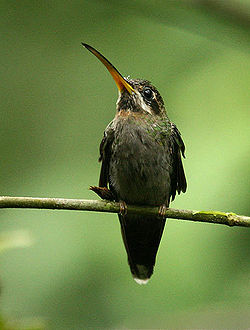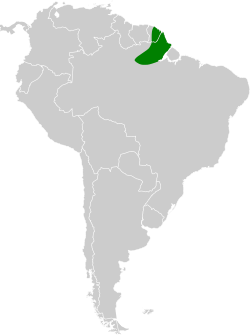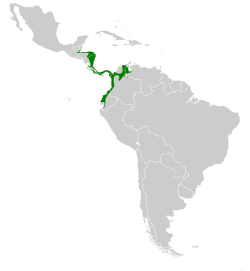| Barbthroats | |
|---|---|
 | |
| Band-tailed barbthroat, Threnetes ruckeri | |
| Scientific classification | |
| Domain: | Eukaryota |
| Kingdom: | Animalia |
| Phylum: | Chordata |
| Class: | Aves |
| Clade: | Strisores |
| Order: | Apodiformes |
| Family: | Trochilidae |
| Subfamily: | Phaethornithinae |
| Genus: | Threnetes Gould, 1852 |
| Type species | |
| Trochilus leucurus Linnaeus, 1766 | |
| Species | |
See text | |
The barbthroats are a genus Threnetes of South American hummingbirds in the family Trochilidae.











